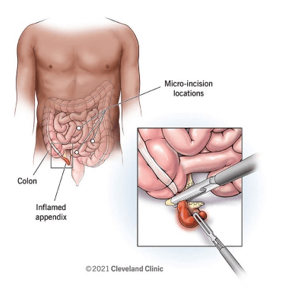An adult client is admitted to the psychiatric unit because of a daily, complex handwashing ritual that takes two hours or longer to complete.
The client worries about staying clean and refuses to sit on any of the chairs in the day area.
This client's handwashing is an example of which clinical behavior?
Addiction.
Phobia.
Compulsion.
Obsession.
The Correct Answer is C
Choice A rationale:
Addiction involves a dependence on a substance or behavior that leads to withdrawal symptoms when the substance or behavior is discontinued. The client's handwashing behavior is not related to addiction.
Choice B rationale:
Phobia refers to an irrational and intense fear of a specific object or situation. While the client's avoidance of sitting on chairs in the day area may be related to anxiety, it does not represent a specific phobia.
Choice C rationale:
Compulsion is the correct answer because the client's handwashing ritual is an example of compulsive behavior. Compulsions are repetitive behaviors or mental acts that a person feels driven to perform in response to an obsession or according to rigid rules. In this case, the client is compelled to engage in the ritual to alleviate anxiety or distress.
Choice D rationale:
Obsession refers to persistent and intrusive thoughts, urges, or images that cause distress and anxiety. While the client's handwashing ritual may be related to obsessive thoughts about cleanliness, the primary clinical behavior being exhibited is the compulsive handwashing itself.
Nursing Test Bank
Naxlex Comprehensive Predictor Exams
Related Questions
Correct Answer is D
Explanation
An 18-year-old client with a mild mental disability is a client who has a lower than average intellectual functioning and some limitations in adaptive skills, such as communication, socialization, and self-care. A mild mental disability may affect the client's ability to understand, cope, or cooperate with medical interventions, such as ambulation after surgery.
Ambulation is the act of walking or moving around. It is an important part of postoperative care, as it helps to prevent complications such as deep vein thrombosis, pulmonary embolism, pneumonia, atelectasis, constipation, and pressure ulcers. Ambulation also promotes circulation, wound healing, and muscle strength.
When the practical nurse (PN) atempts to assist the client to ambulate on the first postoperative day after an appendectomy, the client becomes angry and says, "PN, 'Get out of here! I'll get up when I'm ready!" This may indicate that the client is experiencing pain, fear, anxiety, or frustration due to the surgery and the recovery process .
The best response for the PN to make is to acknowledge the client's feelings, provide reassurance and support, and set a clear and realistic goal for ambulation. This will help to establish rapport, reduce resistance, and motivate the client to participate in the care plan.
Therefore, option D is the correct answer, as it shows empathy and respect for the client's feelings, while also informing the client of the expectation and time frame for ambulation. Option D also allows the client some time to prepare mentally and physically for the activity.

Correct Answer is C
Explanation
The correct answer is choice C: Ensure that the call bell is easily accessible to the client.
Choice C rationale: Ensuring that the call bell is easily accessible empowers the client to promptly request assistance if needed during the night. This promotes safety and reduces anxiety, as the client can quickly contact the nurse if they experience an urgent need to use the restroom or require any other assistance during the night.
Choice A rationale: Reassuring the client that someone will check on him hourly may provide some comfort, but it does not directly address the client's issue of urinary frequency. Ensuring easy access to the call bell is a more targeted approach to managing the client's needs.
Choice B rationale: Placing fresh water and a glass within reach on the bedside table is a good practice to maintain hydration, but it does not directly address the client's urinary frequency issue.
Choice D rationale: Offering an evening snack and oral care is essential for the client's overall well-being, but it is not directly related to managing the client's urinary frequency at night. The primary focus should be on ensuring that the client can access assistance quickly when needed.
Whether you are a student looking to ace your exams or a practicing nurse seeking to enhance your expertise , our nursing education contents will empower you with the confidence and competence to make a difference in the lives of patients and become a respected leader in the healthcare field.
Visit Naxlex, invest in your future and unlock endless possibilities with our unparalleled nursing education contents today
Report Wrong Answer on the Current Question
Do you disagree with the answer? If yes, what is your expected answer? Explain.
Kindly be descriptive with the issue you are facing.
